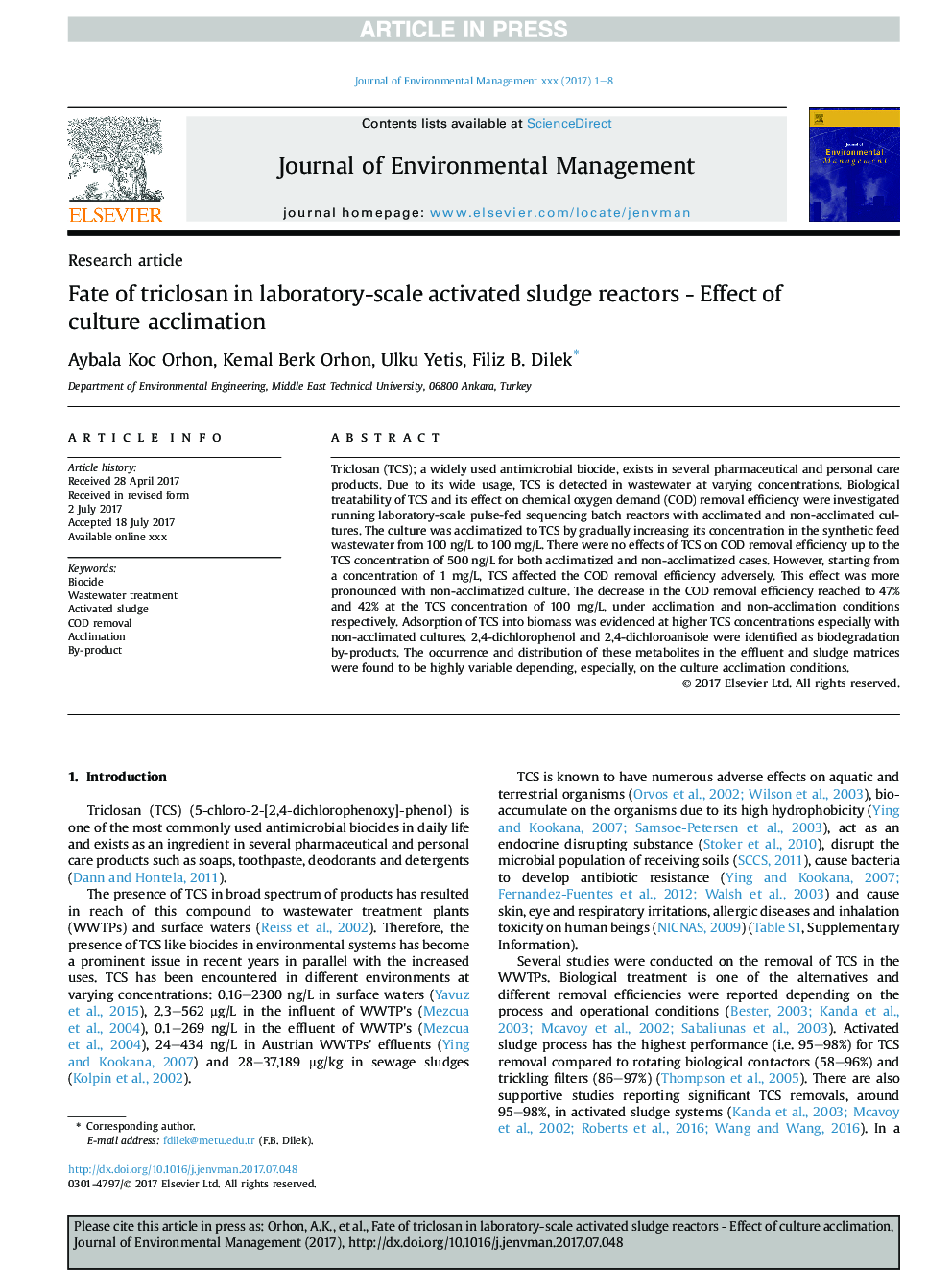| کد مقاله | کد نشریه | سال انتشار | مقاله انگلیسی | نسخه تمام متن |
|---|---|---|---|---|
| 7477416 | 1485202 | 2018 | 8 صفحه PDF | دانلود رایگان |
عنوان انگلیسی مقاله ISI
Fate of triclosan in laboratory-scale activated sludge reactors - Effect of culture acclimation
ترجمه فارسی عنوان
سرنوشت تریکلوسان در راکتورهای لجن فعال شده در آزمایشگاه - تأثیر انطباق فرهنگ
دانلود مقاله + سفارش ترجمه
دانلود مقاله ISI انگلیسی
رایگان برای ایرانیان
کلمات کلیدی
موضوعات مرتبط
مهندسی و علوم پایه
مهندسی انرژی
انرژی های تجدید پذیر، توسعه پایدار و محیط زیست
چکیده انگلیسی
Triclosan (TCS); a widely used antimicrobial biocide, exists in several pharmaceutical and personal care products. Due to its wide usage, TCS is detected in wastewater at varying concentrations. Biological treatability of TCS and its effect on chemical oxygen demand (COD) removal efficiency were investigated running laboratory-scale pulse-fed sequencing batch reactors with acclimated and non-acclimated cultures. The culture was acclimatized to TCS by gradually increasing its concentration in the synthetic feed wastewater from 100Â ng/L to 100Â mg/L. There were no effects of TCS on COD removal efficiency up to the TCS concentration of 500Â ng/L for both acclimatized and non-acclimatized cases. However, starting from a concentration of 1Â mg/L, TCS affected the COD removal efficiency adversely. This effect was more pronounced with non-acclimatized culture. The decrease in the COD removal efficiency reached to 47% and 42% at the TCS concentration of 100Â mg/L, under acclimation and non-acclimation conditions respectively. Adsorption of TCS into biomass was evidenced at higher TCS concentrations especially with non-acclimated cultures. 2,4-dichlorophenol and 2,4-dichloroanisole were identified as biodegradation by-products. The occurrence and distribution of these metabolites in the effluent and sludge matrices were found to be highly variable depending, especially, on the culture acclimation conditions.
ناشر
Database: Elsevier - ScienceDirect (ساینس دایرکت)
Journal: Journal of Environmental Management - Volume 216, 15 June 2018, Pages 320-327
Journal: Journal of Environmental Management - Volume 216, 15 June 2018, Pages 320-327
نویسندگان
Aybala Koc Orhon, Kemal Berk Orhon, Ulku Yetis, Filiz B. Dilek,
